On arrival at Ivato (Antananarivo) Airport, you are met and transferred to your hotel. On your way you will see rice paddies, and a colourful patch-work of houses, and the daily life in this city of about 2 million inhabitants. Tananarivians mostly live from day to day jobs. This is called “Ady Gasy”: tires repairing, selling Chinese-made products in the streets, selling scrap.
Antananarivo
Tana, (as the capital city of Madagascar is conveniently called), is a brightly coloured mélange of French colonial architecture, multistoried houses and narrow alleys. Antananarivo sprawls over the rolling central highlands of Madagascar surrounded by fields of rice paddies. A city with unique architecture, oodles of charm and bustling streets, Tana must have been a beautiful city at one time. Today, the city is quite often a shock to first time visitors - throngs of people, buildings in a state of decay, houses packed one upon the other, street urchins, hooting and belching old French cars and the lively hustle and bustle of the street markets, all combine to make Antananarivo (Tana) a bit overwhelming at first.
But Tana is quite a fascinating city to explore. The city sprawls over several hills with lots of narrow houses, narrow cobblestone streets and stone staircases linking one street to another. Each street seems lined with traders and the array of merchandise on offer in the stalls and markets is in a class of its own – with Malagasy embroidery, semi-precious stones and local crafts all jumbled up together.
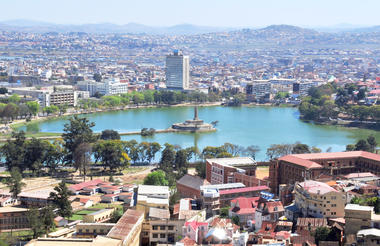
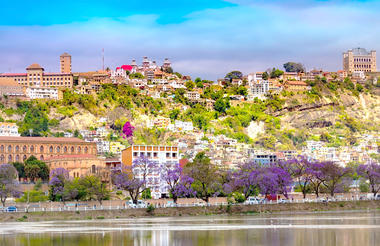
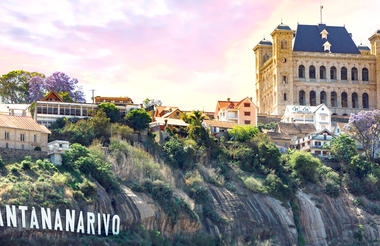
Transfer to your hotel
Optional city tour, time permitting
After breakfast, you set off with your private guide and car for a 3 hour drive southward to Antsirabe across the highland landscape with its terraced rice-fields and its spectacular eroded hills called ‘lavaka’. You see the typical Madagascar highland houses which are all orientated west according to Malagasy tradition and superstition.
You arrive to Antsirabe in the mid afternoon. Founded by Norwegians in 1856, it is an elegant city, which really feels and looks like a European city. With its temperate climate, thermal springs and wide avenues, it is one of the most attractive towns in Madagascar.



Travel south to Antsirabe
After breakfast you head on to Miandrivazo for 3 to 4 hours’ drive. The landscape is changing step by step, from green highland to dry savanna. En route you have a short visit to Betafo, some 20km from Antsirabe which is also a thermal city. Here we visit the small market place and see Lake Tatamarina. Arrival in Miandrivazo in the afternoon. Miandrivazo or “waiting for her love” is known as the hottest city of Madagascar.
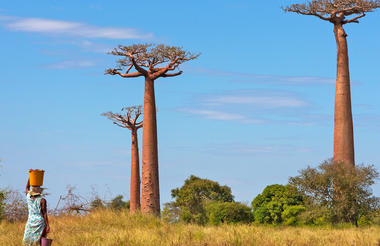
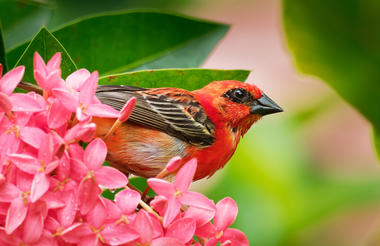

Head west to Miandrivazo
Continue towards the coast but then head north to Relais du Kirindy. The Western part of Madagascar is the driest, known for both its magnificent baobab trees and its dry western forest. So along the way, we’ll do some baobabs’ excursions to visit the sacred baobabs, and the famous baobabs alley.
Alley of Baobabs – Just before Morondava, we stop at the Alley of Baobabs for sunset photos. These huge trees, several hundred years old, will reveal their beauty and size with the red colours of dusk. This is one of the most popular spots in Madagascar. These baobabs can be up to 800 years old and be 98 feet high (30 m). The diameter of the largest trees can reach up to 36 feet (11 m).
Afterwards, you will drive to Kirindy. The Kirindy Forest reserve protects the dry deciduous forests, home of the famous giant jumping rat. Only 50 km from Morondava, Kirindy Park offers such biodiversity that you will discover lemurs such as the katta (lemur with a prehensile tail) as well as reptiles and other amphibians.
Night Walk
You will go on a night walk in the Kirindy forest, composed of drought-adapted plants and animal species such as baobabs, the mouse lemur, as well as various birds and bats. With a bit of luck, you can spot a fossa during hunting! These cat-resembling predators call the dry reserve their home. A strong flashlight can be very useful on the hike.
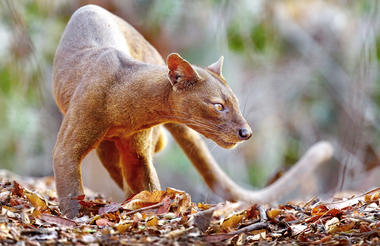
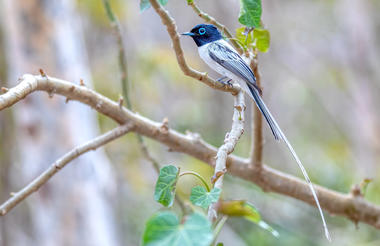
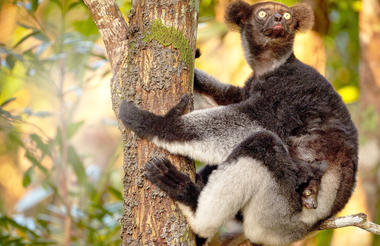
Early morning visit to Kirindy
In the following morning, you have a morning walk with a specialist guide. Kirindy is one of the most rewarding wildlife site.
It is home to fascinating flora and fauna in a dry forest which consists of plant and animal species adapted to drought such as baobabs, endemic species of lemurs , birds and bats, etc. You may be able to some of the 7 species of lemurs: the most common one are: Verreaux’s sifaka, fulvus rufus, red-fronted brown lemurs. With a little luck, you may spot a "Fosa", the largest predator on the island.
After the visit, you will continue the adventure within the deep western part of Madagascar in order to reach the site that makes us proud: the UNESCO classified Tsingy of Bemaraha National Park. The journey will take you about eight hours, as you will have to cross two rivers and continue the trip on dirt roads. First, you’ll reach the Tsiribihina River, which you will have to cross with a wooden ferry.
A pleasant surprise awaits you on the road - in the small village of Belo sur Tsiribihina, you will stop for lunch in one of the best restaurants in Madagasacar - Le Mad Zebu. You will arrive in Bekopaka in the late afternoon / early evening. This is a little village close to the Bemaraha National Park.



Enjoy a hike in the limestone reserve of ‘Tsingy de Bemaraha’. This massif is spectacularly eroded into a chaos of karsts pinnacles which gives it a unique form - wild and sharp limestone pinnacles.
These limestone pinnacles were built by the slow sedimentation of coral and shells. When Madagascar separated from Africa 165 million years ago, the ocean withdrew and the tsingy remained. This strange stone forest of serrated ‘tsingy’ is a 100 meters tall in places. Under the tsingy, there are undiscovered caves, rivers, and canyons. Bats, lemurs, birds and endemic flora have adapted to this unique ecosystem.
The flora consists of a dry western deciduous forest as well as the typical plants of these dry limestone areas, such as aloes, baobabs and the red-flowered flamboyant tree which is so widely planted in the tropics. We can also see plants which grow between the stone such as different species of pachypodium and orchids.
As far as wildlife goes, we can see the stump-tailed chameleon Brookesia perarmata known from only a handful of specimens. The bird list contains 53 species. The 7 species of lemurs include Decken’s sifaka or Propithecus verreaux. These are also known as the dancing lemurs.
Note: You can choose how much you want to hike.
Today we recommend the Grand Tsingy - There is the “grand tsingy” hike of approx 4 to 5 hours.



Hiking in the Park (choice of longer and shorter trails)
The "Petit Tsingy" of Tsingy de Bemaraha is located near the entrance of Bekopaka village. Within this part of the National park, you may choose between different walks of various lengths.
You have the possibility of visiting caves and tombs, hiking through the forest, but in the afternoon, you can take a guided pirogue tour (wooden canoe) along the Manambolo River to visit the Vazimba tombs.



Today you will leave this rocky paradise and embark on an 8 hour long journey back in the southern direction along the western coast of the island. It is the same road you took on day 9. Just before arriving in Morondava you’ll pass by the famous Baobab Alley at sunset, and have the chance to admire the magnificent view before heading to your hotel.
OPTIONAL EXTRA NIGHT: We strongly recommend adding an extra day so that you can break your journey in Kirindy again. This allows you enough time to see the Forest without being under time-pressure. It also gives you some time in Morondava. (You would then continue to Morodava where the rest of the day is at leisure to enjoy the beach.)



Morning at leisure to discover Morondava.
Morondava is actually a seaside resort on the beach facing the Mozambique Channel. The Morondava area was the centre of the Sakalava kingdom, a prosperous rice-growing area. It has a resort atmosphere – a laid-back vibe where many different cultures and religions manage to intermingle which makes it very special. And somewhat unusual in Madagascar. You can easily walk around the town and, visit the colourful market and the naval carpentry workshop.
Then you are transferred to the airport for your flight back to Tana for a second overnight stay.
Note: Flight schedules change regularly in Madagascar. Plus the Morondava to Tana flight is usually in the early afternoon hence the need for another overnight stay.
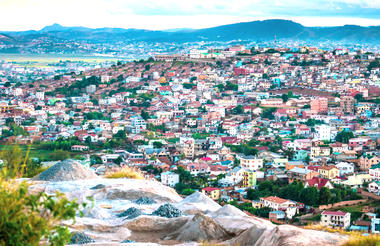
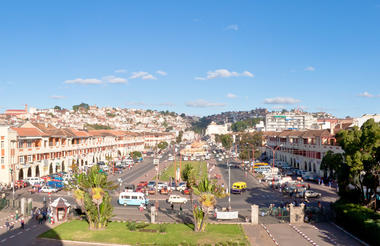
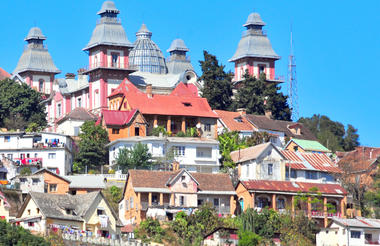
After breakfast, you head east to Andasibe. This step brings us to the humid part of the country with many primary forest and lakes. After some stops along the way we arrive in time for lunch (own account). This evening you may enjoy an optional night expedition.
Andasibe National Park
The eastern rainforests of Madagascar are a must-see on any Madagascar lemur safari. The tropical montane rainforest of Madagascar is one of the densest in the world and its floral diversity is particularly rich. A big part of that attraction is the appeal of the Indri lemurs which have their own special protected part of the Andasibe Park.
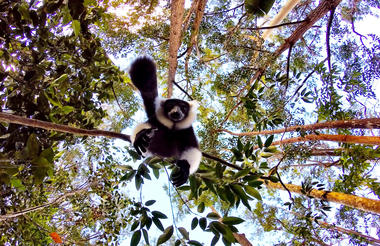
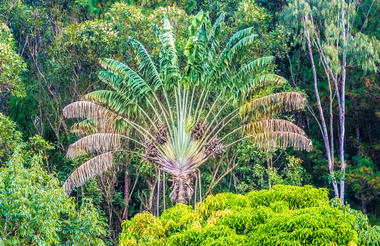
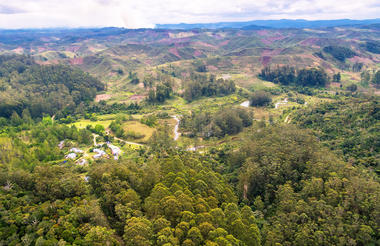
Either transfer back to the airport OR extend the trip to Andasibe National Park for 2 nights
Today you have a morning expedition to explore the rainforest with the Park’s specialist guides.
Important Note: Depending on your interests and your final days flight time, we may visit the Special Indri Indri Reserve today in the morning, and then Mantadia in the afternoon. But if you have time, we visit Mantadia today and then the Special Indri Indri reserve on the final morning.
Mantadia Reserve
You set off early for a walking tour of the Mantadia National Park. Typically this is usually a morning tour of 4-5 hours> But if you don’t wish to walk so far or long, there are easier trails of two hours or so.
This is much wilder than the Indri Special Reserve (seen tomorrow) and has a mix of terrain, with some steeper trails, so it’s best if you are reasonably fit. (However there are also some shorter and easier trails on offer if you prefer.)
The 810ha forest reserve is much thicker and more pristine but you are rewarded with varied wildlife sightings such as the diademed sifaka (the so-called dancing lemur), the black-and-white ruffed lemur, common brown lemur, red-bellied lemur and the grey bamboo lemur. Birding in Mantadia is especially good with the likes of the rare Brown mesite, Pitta-like ground-roller, Brown emutail and the velvet asity all to be seen. (Your chances of good birding increases on the longer trails.)
In the afternoon you may like to visit the private reserve of Vakona where you can play with the (extremely) with habituated black & white lemurs and brown lemurs which are very relaxed, jumping onto your shoulders without the slightest hesitation.. This is mainly a photographic opportunity but most people enjoy getting a photo with a lemur!


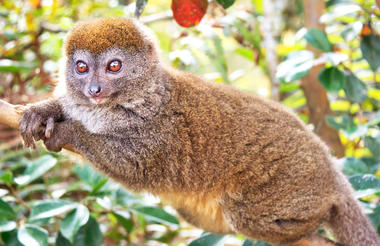
Walking tour in the park
This morning we visit the Special Indri Indri special reserve for a few hours in the early morning. Then you head back to Tana in time for your flight.





